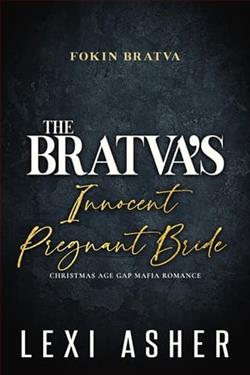Page 68 of The Last Days of Marilyn Monroe
During daily rushes, there had been a moment where a frustrated Tony Curtis invoked Marilyn and Hitler in the same breath. “After take forty, kissing Marilyn is like kissing Hitler” is what he claims to have said, though other, unkinder versions of the quote are quickly repeated. Asked if he’d ever make another movie with Monroe, Wilder jokes, “I have discussed this with my doctor and my psychiatrist, and they both tell me I’m too old and too rich to go through this again.” Marilyn is hospitalized with exhaustion—for the second time in three months. She is placed on bed rest with a drip for four days, then leaves in an ambulance so as not to “jar the baby” and flies back to New York and to the anxious embrace of Arthur Miller.
On December 17, 1958, there’s another private showing ofSome Like It Hot.
But while the audience is still laughing at the last line of the film, “Well, nobody’s perfect,” Marilyn, five months pregnant, has another miscarriage.
Neither Miller nor Marilyn’s psychiatrist, Dr. Kris, nor the Strasbergs can keep her from falling into a deep depression.
On January 27, 1959, the National Institute of Arts and Letters announces that Arthur Miller will be awarded the Gold Medal for Drama for his career achievements.
As Miller is being elevated, Marilyn is spiraling downward.
That night, Marilyn’s maid, Lena Pepitone, discovers Marilyn lying unconscious in bed, her face covered in vomit. With Miller away, she calls the private doctor. Marilyn’s stomach is pumped, again.
At 3 a.m., fearful of leaving Marilyn alone, Pepitone calls Norman and Hedda Rosten, who rush to her bedside.
“It’s me, Norman, how are you my dear?” he asks, taking hold of her hand.
“Alive,” she replies, her eyelids fluttering, her voice gravelly and slowed by the effects of the drugs. “Worst luck. Cruel of them all.” She laughs a little. “All those bastards. Oh Jesus … Who’d notice if I went.”
“I would,” he says. “I would notice very much.”
Rosten sits and holds her hand for hours and lets her cry. He knows she’s done this before and will probably do it again. It’s important to make sure she’s found in time. It’s a wave of deep sadness, but no one is stuck in a wave forever. It passes. She just has to get through the wave.
On March 29, 1959, barely four months after shooting wraps,Some Like It Hotpremieres at Loew’s State Theatre.
It’s been nearly four years sinceThe Seven Year Itchdebuted in this same location, but the crowds have not diminished in the slightest. Thousands of people line the street in New York City’s Times Square.
“Mr. and Mrs. Arthur Miller have arrived,” a broadcaster narrates. “Hundreds of photographers out there surround them. They can’t even move to get in. They need that police protection, believe me. She looks fantastic. And I’m only looking at her hair.”
In its review,Varietypraises Marilyn as “a comedienne with sex appeal and timing that just can’t be beat.”
With Marilyn, the professional can never be separated from the personal. “If at the time of filming she was pregnant, and the tight dresses she’s asked to wear just don’t fit well, never mind,” the review continues. “This gal can take it.”
Can she?
Not long after the film is released, Marilyn sends Rosten a poem.
Help Help
Help I feel life coming closer
When all I want to do is to die.
CHAPTER 46
SOME LIKE IT HOTmakes $13 million in its initial release.
A COMIC MARILYN SETS MOVIE AGLOWproclaims the cover ofLifemagazine’s April 20, 1959, issue, which pictures the star clutching a strand of diamonds between her teeth.
Yet despite their combined fame and talent, Marilyn and Arthur Miller are effectively broke.
“All he cares about is himself, his own writing … and money … that’s all,” Marilyn complains. “It’s always money. He’s obsessed with money.”
Marilyn Monroe Productions has paid him $250,000 for the screenplay forThe Misfits,which he’s yet to complete.
“I would not have written it except for Marilyn,” Miller says. He seesThe Misfitsscreenplay as a tribute to his “belief in her as an actress.”
The character he’s writing for her—“Roslyn,” a naïve ex-stripper who has come to Reno, Nevada, to get a divorce—wasn’t in the short story he earlier published inEsquirein October 1957, a fictionalization of the scenes he observed atPyramid Ranch while he waited for his own divorce from his first wife.















